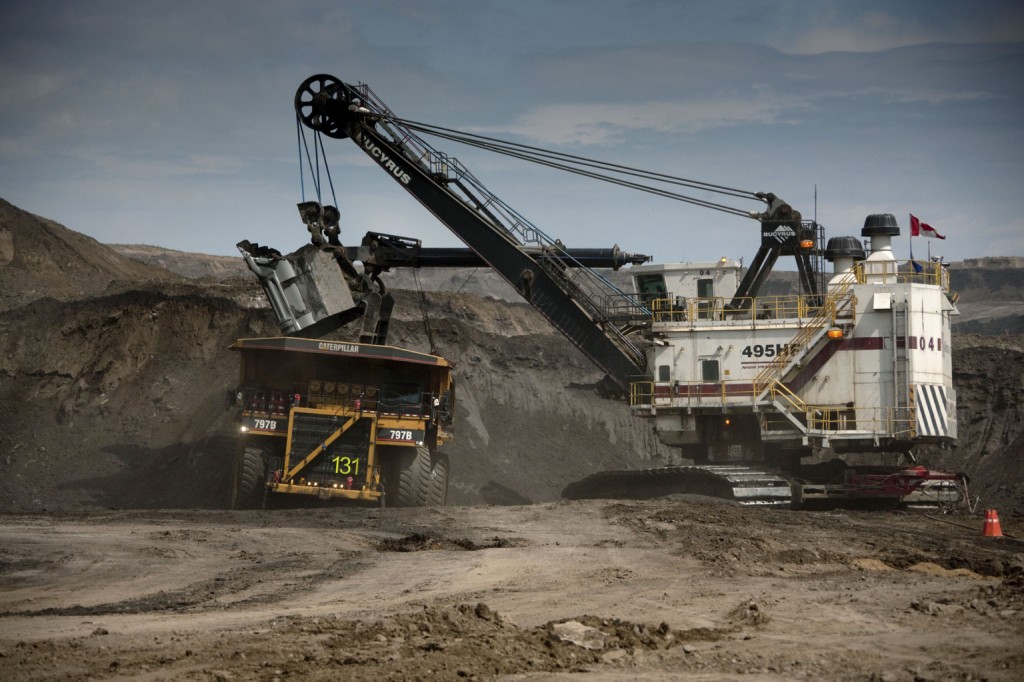
Canada’s oil sands could struggle to rebound, with potentially billions of barrels of oil being kept underground permanently.
Canada’s oil sands are incredibly expensive, some of the costliest sources of oil in the world. Unlike conventional oil drilling, or even drilling in shale, producing from oil sands is more like open-pit mining in many cases. The oil, often found as a sticky, viscous semi-solid known as bitumen, requires extra steps to extract and process before it can be shipped. That stands in stark contrast to conventional oil, which merely requires drilling into an oil field and pumping out the crude.
As a result, the breakeven cost for Canada’s oil sands is dramatically higher than most other places in the world. Obviously, costs vary from company to company and project to project, but a 2016 estimate from IHS put the average breakeven price at a new greenfield oil sands mine at between $85 and $95 per barrel. A steam-assisted gravity drainage (SAGD) project could cost between $55 and $65 per barrel just to break even. With those figures, it is easy to see why very few, if any, greenfield projects could move forward in the near- to medium-term, particularly when companies could look elsewhere for oil.
Finally, developing oil sands requires billions of dollars and the payback period is stretched out over decades. The great thing about that for producers is that it provides consistent output for years. But that is no longer the top priority for oil companies hoping to avoid having cash tied up over long time horizons. The oil market is extremely volatile, so short-cycle shale is much more attractive these days even if shale wells fizzle out over a few years.
In short, Canadian oil sands are struggling to remain competitive in a marketplace that has changed dramatically from three years ago.
A glaring example of this problem came from ExxonMobil this week, which announced that it had removed 3.3 billion barrels of Canadian oil sands from its books. The de-booking was notable for several reasons. First, it was remarkable given the fact that Exxon has refused to write down assets or remove reserves from its books even during the worst depths of the oil price downturn. That stubbornness led to an SEC investigation into the oil major’s accounting practices, as well as an inquiry from the New York Attorney General. The regulatory scrutiny certainly influenced the latest disclosure.
But the de-booking is even more interesting because of what it says about Canada’s oil sands. Exxon removed 3.3 billion barrels from its books, admitting that the oil is simply not profitable to produce with today’s prices. It’s a pretty damming admission: the oil will ultimately be left in the ground unless oil prices substantially rebound. The project was equivalent to 15 percent of the company’s entire proved reserve base.
Exxon’s announcement came shortly after ConocoPhillips also removed oil sands reserves from its books. Conoco de-booked 1.15 billion barrels of oil sands a day before Exxon, taking the oil company’s reserves to a 15-year low.
Canada will still see some increases in oil production in the short-term stemming from oil sands projects that were planned years ago but are only now coming online. But once that queue of projects gets worked through, there are very few additional projects beyond that.
To be sure, the huge oil production capacity in Alberta will remain online for years to come. Unlike shale wells, they continue to produce for a very long time. But the extraordinary growth that the region had bet on, which would propel increases in production for the next few decades, may not come to pass unless oil prices return to pre-2014 heights.
“Keep it in the ground” has been the mantra of environmental groups worried about climate change. But it could be low oil prices and the lack of competitiveness of Canada’s oil sands that keep the reserves in the ground.
By Nick Cunningham of Oilprice.com